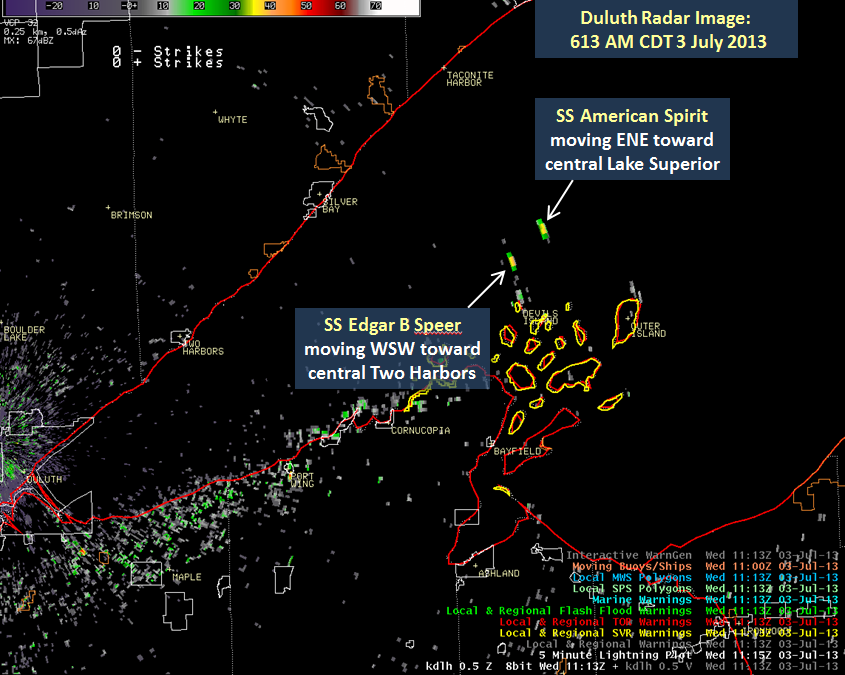
Cold temperatures will continue across much of the eastern U.S. into today. Heavy lake effect snow continues into today east of Lakes Erie and Ontario. Two Pacific cold fronts will cross the Pacific Northwest early this week followed by another atmospheric river. Heavy rain and gusty winds are expected through midweek, with the potential for renewed urban and river flooding. Read More >
Duluth, MN
Weather Forecast Office
The National Weather Service's weather radar picked up some ships on Lake Superior this morning. It is rare for the radar to "see" anything at ground level because the radar is pointed up to sample the atmosphere, not the ground. However, a rare atmosphere phenomena this morning enabled the radar to see or pick up as targets two ships on Lake Superior. What occurred this morning to the radar beam is an extreme case of superrefraction called "ducting". Superrefraction and ducting of the radar beam occurs where there is a strong low level temperature inversion. An inversion is when a very shallow layer of cold air is top by warmer air above. This usually happens on clear, cool nights with no wind- like last night. When ducting occurs, the radar beam gets trapped under the temperature inversion and cannot get higher into the atmosphere; it becomes trapped. It can remain like this for a couple hours until the sun sufficiently warms the lower levels and "breaks" the inversion. You can learn more about ducting here.
Forecasts
Fire Weather
Great Lakes
Local Text Products
Winter Weather
Local Area Forecasts
Aviation
Marine
Rainy River Basin Page
Current Conditions
Current Observations
Public Information Statements
National Snowfall Map
NOHRSC Snow Analysis
Rain/Snow Reports
Winter Monitor
US Dept of Commerce
National Oceanic and Atmospheric Administration
National Weather Service
Duluth, MN
5027 Miller Trunk Highway
Duluth, MN 55811-1442
218-729-6697 - Duluth; 218-283-4615 - Intl Falls
Comments? Questions? Please Contact Us.



